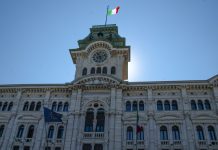by InTrieste
The Italian government is urging Washington to reconsider a proposed wave of tariffs that could more than double the cost of Italian pasta imports to the United States, escalating tensions in transatlantic trade.
The U.S. Department of Commerce has announced plans to introduce an additional “anti-dumping” duty of 91.74 percent on Italian pasta products beginning in January 2026. The measure would come on top of an existing 15 percent tariff on European agri-food imports that took effect on August 1, raising the total duty on Italian pasta to roughly 107 percent.
The decision follows a year-long investigation by the Commerce Department, which concluded that two major Italian producers, La Molisana and Garofalo, had allegedly sold pasta in the U.S. market at below fair value between July 2023 and June 2024.
Italian officials and industry leaders have rejected the findings, warning that the tariffs would severely harm one of Italy’s most iconic export sectors.
“This would trigger a hyper-protectionist mechanism against our pasta producers, for which we see neither the need nor any justification,” Italy’s agriculture minister, Francesco Lollobrigida, said in a statement. He added that the government and diplomatic representatives were in “constant contact” with U.S. counterparts to discuss not only pasta but also other key exports such as wine, Pecorino Romano cheese, and extra virgin olive oil.
The United States is among Italy’s most important markets for pasta. According to Coldiretti, Italy’s leading agricultural association, pasta exports to the U.S. totaled about €671 million in 2024. The group warned that the new tariffs would deliver a “mortal blow” to the industry and potentially drive consumers toward “Italian-sounding” imitations produced domestically in the United States.
Coldiretti also questioned the timing and motivation behind the decision, calling the dumping allegations “unacceptable and exploitative” and linking them to former President Donald J. Trump’s longstanding push to move more food production onto U.S. soil.
“The 107 percent tariff would double the cost of a plate of pasta for American families,” the organization said, arguing that the policy would “devastate” Italy’s pasta sector.
Industry executives are already weighing their options. La Molisana’s chief executive, Giuseppe Ferro, told reporters on Monday that the company was prepared to open a plant in the United States if the tariffs go into effect. “It would be impossible for us to do business with tariffs at 107 percent,” he said.
While Italian officials continue their diplomatic outreach, the dispute underscores the fragile state of U.S.–E.U. trade relations, particularly in agriculture and food products, where cultural symbolism often collides with economic policy.
For Italy, where pasta is both a national staple and a global brand, the outcome could shape not only future trade with the United States but also the international perception of “Made in Italy” itself.































